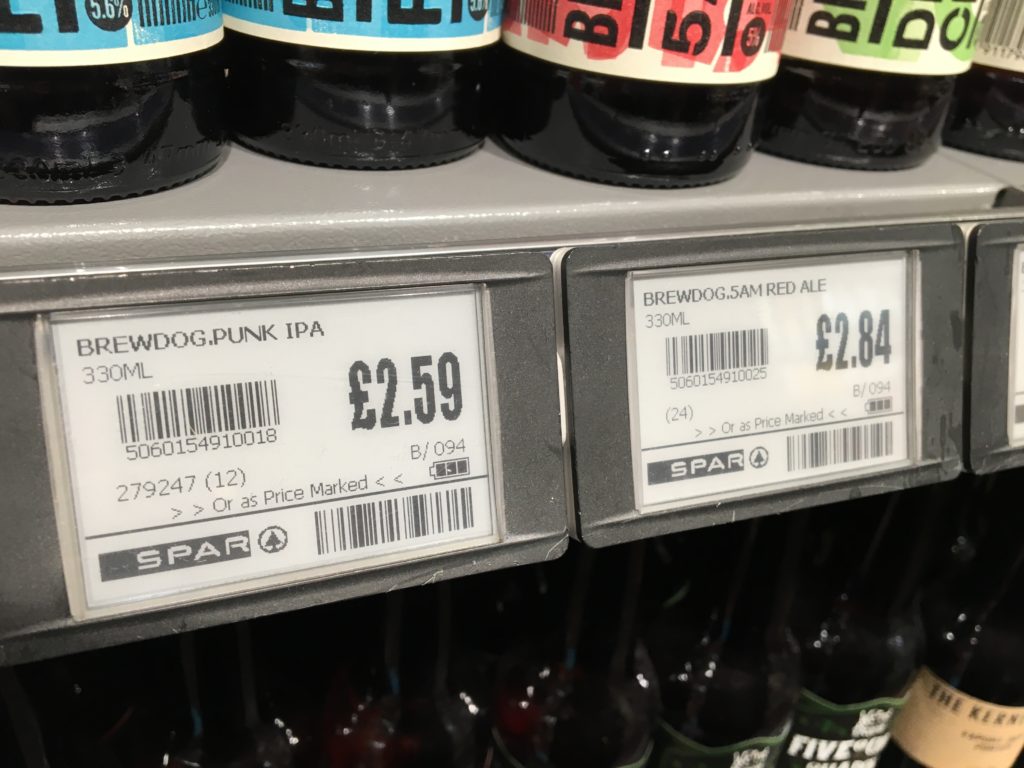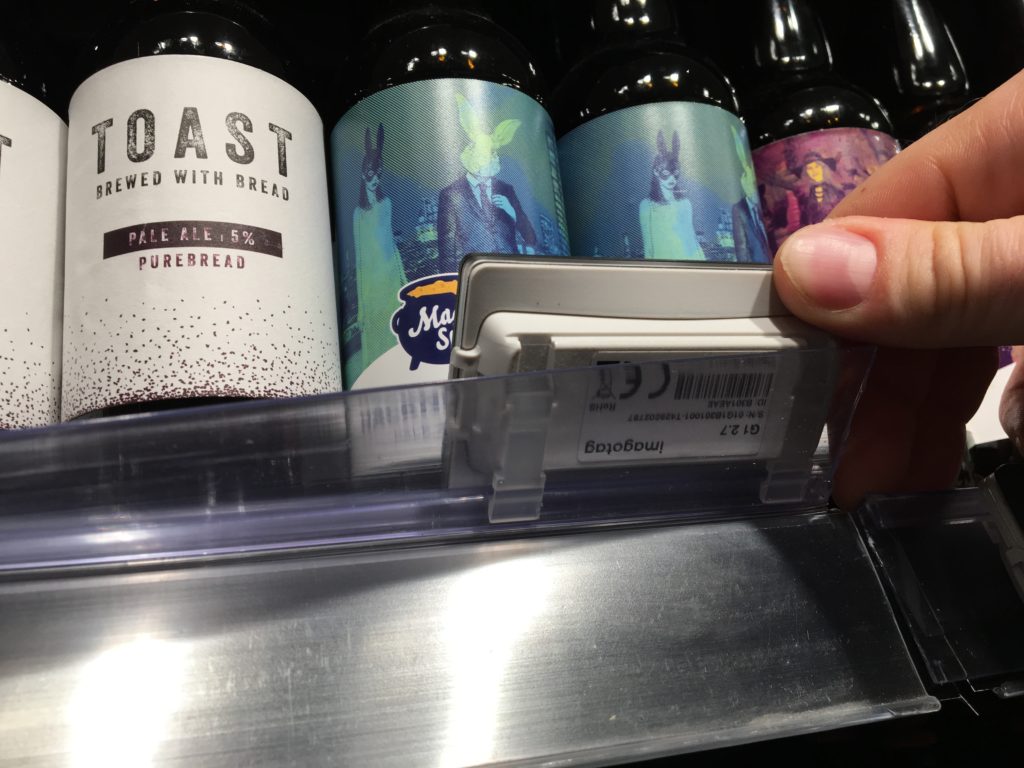Electronic supermarket price tags are living amongst us
They look like paper tags…

… but paper tags tend not to have a battery-level indicator.

Currently being piloted in a handful of stores across the UK, electronic tags are already common elsewhere in Europe. The operational benefits for stores are clear – easier, quicker and more efficient central management of prices. Ultimately that means the ability to manage prices far more dynamically – raising or lowering prices in response to supply and demand throughout the day, for example.
It’s not accidental that the tags in Spar are designed to look like paper though. The more innocuous the better. Sectors come with expectations for how pricing works and with the exception of fresh produce coming up to its sell-by date, there is little understanding of dynamic pricing in grocery retail. And shoppers’ response to dynamic pricing can be wildly different depending on context. It’s clear that price and brand equity are related but rapidly changing prices add a new complexity to that relationship. How this plays out for retailers and brands’ reputations depends a lot on how they use this tool.
For the airlines, the dynamic pricing model popularised in the UK by Ryanair and Easyjet has been broadly welcomed. What was once a market of static high prices was reinvented as a market in which there were (at least occasionally) huge discounts available.
Contrast that with the blowback Uber’s surge-pricing model has attracted. Here dynamic pricing is seen as opportunistic and mean.
Or train travel in Britain where there are a bewildering array of semi-dynamic prices.
So what could retailers offer that might represent a benefit for them and for shoppers?
Some first thoughts from us:
1 / Use pricing to tell a wider story – stores could use dynamic pricing as a way to explicitly draw people to local, seasonal produce in store as part of a wider eco/ethical campaign
2 / Short-term price promotions – taking the huge popularity of sales events like Black Friday to the next level by having flash-sales lasting just an hour or two at key times of day
3 / Gamified pricing – a dynamically-changing treasure hunt to make bargain hunting a little more literal
And further out, a more dynamic, richer set of information and technology on shelf holds the possibility of more direct benefits for shoppers as the technology develops – for example:
- Stock availability indicators for out-of-stocks to encourage shoppers to ask for items not immediately available on shelf
- Price comparison by showing competitor prices right on the shelf
- And by linking with smartphones, the ability to display personalised content and maybe even personalised pricing
If you want to know more about how your pricing strategy can work harder for you and your consumers please get in touch.




